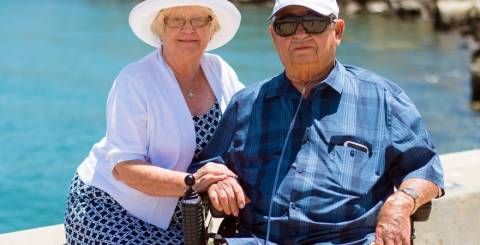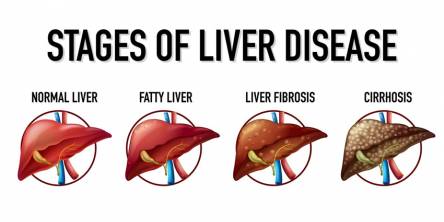A Pain Doctor Will Have Specialized Training For A Parkinson’s Patient

An exam by a primary care physician will be the first place a diagnosis of Parkinson’s disease is given. There are other diseases and illnesses that share the symptoms of Parkinson’s and as such, a misdiagnosis is possible. For a correct and proper diagnosis to be made, early intervention by an expert that specializes in the disease is necessary. This can be done at an advanced brain center that is staffed by a multidisciplinary team.
This multidisciplinary team will include an expert neurosurgeon that will most likely be the lead team member. Other members of the team that will handle the care of a patient with Parkinson’s will be a general physician and physician assistant, nurses and nurse practitioners, as well as several specialized therapists and a pain doctor. This team will provide the patient a comprehensive and integrated care using their education, experience, and training of working with Parkinson’s patients as well as other brain conditions. From the diagnosis through treatment and recovery, a Parkinson’s patient will receive a thorough continuum of care.
Where Do The Doctors Start?
After the diagnosis has been made, treatments usually start with options that are non-invasive and nonsurgical. This is managed by a neurologist that specializes in Parkinson’s in coordination with the other team members. As the disease progresses and the treatments begin at a facility that is equipped and staffed for the Parkinson’s patient will sometimes start experiencing discomfort and pain.
In textbooks, the description of pain is an unpleasant experience that is associated with a physical injury or damage to the tissue. Anywhere in and on the body can experience pain for a Parkinson’s patient just as with anyone. Their pain can be from the disease progressing into the bones and tissues of their central nervous system as well as cardiac pain, gastro pain, rheumatologically pain and others. It is at this point that the expertise of a pain doctor is called upon to begin working with the patient.
The clinical experience and diagnostic skills of the pain doctor will be able to determine that is causing the pain for the Parkinson’s patient. Some of the most common pain is as follows:
Musculoskeletal Pain: This pain is the result of the patient’s immobility and rigidity. The standard course of treatment is dopaminergic therapy, exercise program, and physical therapy.
Radicular Pain: A mobility program is recommended for treatment and often includes medication. In rare cases, surgery may be required in a hospital.
Dystonia Pain: The standard approach to treating this pain is to reduce the dopamine medication and possibly replace it with a less powerful agent, or adding amantadine, a medication for dystonia.
Akathisia: This is common with Parkinson’s patient. Because they are unable to do the daily minor things like sitting still, lying in bed, driving, eating at a table or participate in social activities, they are unable to sleep and become isolated from everyone. Medications can make the symptoms fluctuate and the pain doctor may recommend a treatment of additional dopaminergic often provides relief.
After The Pain Is Identified
Once your pain doctor has identified the type of pain, they are better able to find the best way to manage it. They may use a combination of therapies and some may be ongoing for the patient. This depends on how the patient is feeling, how they are responding to treatment and if there are any other factors or issues to be considered. Just as with any other disease or illness, you have to remember that two patients respond the same to any type of therapy. What may work for one person may not work others.
Similar Articles
The global wellness wave continues to tilt increasingly toward natural, organic, and Ayurvedic options. In 2025, the demand for certified-organic herbal supplements and genuine Ayurvedic formulations is higher than ever.
Indigestion, also known as dyspepsia, is one of the most common digestive complaints affecting people of all ages. It often manifests as bloating, heaviness after meals, burning in the stomach, or discomfort in the upper abdomen.
Imagine this: Lying comfortably inside an airtight chamber and taking deep, cleansing breaths of pure oxygen while your body quietly thanks you for its extra dose of healing power.
Vitamin D, often called the “sunshine vitamin,” is one of the most essential nutrients for overall health. It plays a crucial role in calcium absorption, bone health, immune function, and hormone regulation
Money can buy luxury, but not health. Modern sedentary lifestyles, dominated by screens, minimal physical activity, unhealthy diets, addictions, and stress, are crippling our society with diseases.
The liver is a Vital organ which is responsible for a number of essential functions that include detoxification of harmful substance, metabolising nutrients, production of bile for digestion, regulates blood sugar levels by storing and releasing glucose, synthesis of protein, break down of fats through Beta- oxidation.
In ancient times when there was no professional method of health examination, people usually figured out health problems because of signs on one’s appearance. The change of skin color might be one of the most common signs that show something unusual inside the body.
When looking for help for substance abuse, finding and selecting the right drug rehab facility is a crucial step toward a patient's recovery. While there are plentiful options available, it can be overwhelming for people to choose the best one suited to their individual needs.
Fatty Liver Disease (Steatosis) is a common condition which denotes the excessive accumulation of fat in the liver. The liver is located in the upper right-hand portion of the abdominal cavity on the stomach, kidney and intestines. The liver is the major metabolic organ which is found in vertebrate animals









